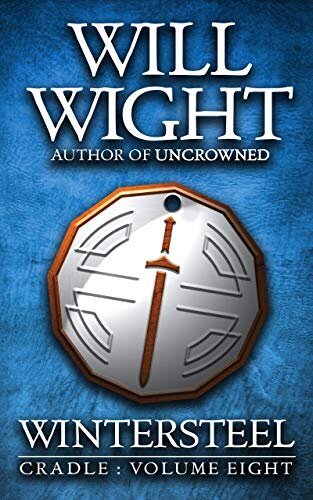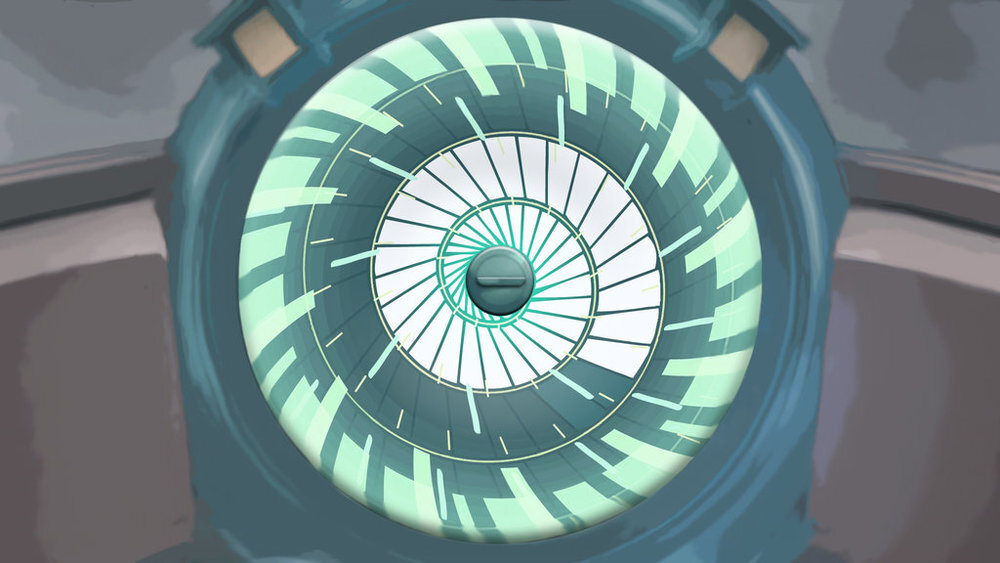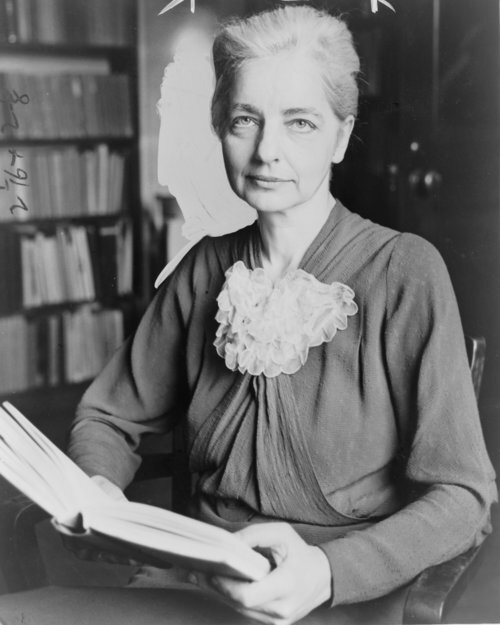Wintersteel by Will Wight Book Review
Just when I thought I knew what to expect from a Cradle book, that Will Wight couldn’t surprise me or ramp up the stakes anymore, Wintersteel [Amazon link] comes along to delight and astound me. And given how well sales have been, I’m clearly not the only one. Wight’s achievement with the Cradle series is to combine the Eastern cultivation novel with some very Western apocalyptic and third-law science fantasy. The result is something greater than the sum of its parts, and the ever growing sales of the series attests to that. The audience is getting what it wants here.

Wintersteel by Will Wight Hidden Gnome Books (October 6, 2020)
One piece of Cradle’s success is the basic structure of each book is the same: Lindon overcomes the challenges in front of him with pluck and grit, goes on adventures, and advances his Path. That is much the same as the pulps of the early twentieth century like The Shadow, or Doc Savage. Each adventure followed the same structure, with new challenges to overcome. Wight added on top of that the logarithmic progression of power from xianxia, the Eastern martial arts fantasy genre with ancient roots but also twentieth century western influence. And then there is still an overarching story across all the novels. Wight has managed to avoid the fate of Patrick Rothfuss and G. R. R. Martin by cranking out books at pulp speed: eight novels in four years, just in this series.

Cradle’s story
In particular, Wintersteel has finally come back to the beginning. I like to use the spiral metaphor from Gurren Lagann in my book reviews, as I find it appropriate for a kind of story I particularly like. I’ve even used it already for Blackflame, but I’m going to use it again because it fits so well here.
Each circuit [Western pulp] is subtly different than the one before, larger in scope [xianxia], encompassing more of the world [epic fantasy and science fantasy]. What makes Wintersteel different from the general pattern of Cradle is that Wight has now completed the setup needed to bring everything back to Lindon’s home, Hidden Valley, and the encounter with one of his world’s celestial protectors that set everything in motion. In way, it is a kind of ending, as so much of what was setup before has now come to fruition.
Which makes it interesting that we see very little of those protectors, the Abidan, in Wintersteel, other than a low-level functionary who seems to inspire nothing but contempt in the people of Cradle he interacts with. We do still get regular reports from an Abidan Presence inbetween chapters, Wight’s solution to the death of the narrator. “Show, don’t tell” is the trend in fiction, sometimes going as far as avoiding anything a character can’t know. Wight doesn’t write Cradle in deep POV as described by Emperor Norton in his blog post on the subject, but I do see the influence that Norton describes in many contemporary books, which attempt to limit text to what a given character sees and feels, which makes it harder for the narrator to provide exposition naturally.
Movies and television have probably exacerbated this tendency in fiction, as a narrator really is an artifact in a medium where the camera takes the place of the narrator. Game of Thrones famously solved this mismatch between the source material and the television adaption by means of sexposition; Cradle gives us chunks of exposition as reports from a marvel of Abidan technology. And it works.
The culture and politics of Cradle also solve another problem identified by Emperor Norton, the gamification of magic. Norton makes the point that prior to Dungeons and Dragons breaking out of its wargaming ghetto, magician protagonists in fantastic adventures were rare. However, D&D produced two related problems for fiction: a set of rules for magic and an expectation that a protagonist [or a player character] will find level appropriate challenges.
Cradles deals with the first by simply making magic into technology, following Clarke’s third law. Despite the mystical woo that everything is dressed up in, the essence manipulation that sacred artists practice is a very Western technology. This is of course nothing like how faerie was done in Western literature one hundred years ago, but it does fit the xianxia mode pretty well. The latter problem is mostly dealt with as a matter of culture and politics.

Powerful sacred artists usually look young, but this picture of Ruth Benedict is how I see Akura Charity
BY WORLD TELEGRAM STAFF PHOTOGRAPHER - LIBRARY OF CONGRESS. NEW YORK WORLD-TELEGRAM & SUN COLLECTION. HTTP://HDL.LOC.GOV/LOC.PNP/CPH.3C14649, PUBLIC DOMAIN, HTTPS://COMMONS.WIKIMEDIA.ORG/W/INDEX.PHP?CURID=1276865
In my review of Soulsmith, I looked at the shame culture of Cradle, following the work of anthropologist Ruth Benedict. Sacred artists bully those below them and fawn on those above them in an elaborate family-based honor code. Customs differ somewhat, but most everyone uses heraldry to announce their allegiance, and sometimes even their level of advancement. However, a major problem is people you don’t know. In Cradle, to paraphrase Norton’s complaint about magicians in fiction, when an unknown sacred artist shows up, the first thing everyone does is start looking for the exits, because power levels are so discordant among sacred artists that inadvertently annoying the wrong guy can get not just you dead, but your whole family dead.
Accordingly, a whole culture of checks and balances has arisen. Sure, you can wipe out dozens of less advanced practitioners with a thought, but that would be gauche. This goes all the way up to the Cradle equivalent of great power politics, as we see in Wintersteel, with factions led by the most powerful sacred artists carefully negotiating slights and policing junior members, as all-out faction wars can be won, but the costs are terrible. The great game is played to forestall a fatal alliance of the other powers against you and yours.
The other element that makes this work more naturally is that advancement in Cradle roughly follows a power-law distribution. There just aren’t that many people at the top of the pyramid, but many many at the lower levels, so the occasional deviations from the norm of not wantonly slaughtering the weak can be absorbed without fundamentally unbalancing society. However, it does make their society unspeakably callous to death.
One of the major engines of the plot of all Cradle novels is that Lindon simply doesn’t fit within any of the existing expectations of the status hierarchy, which maps imperfectly to the power hierarchy, and regularly faces foes that are both far too easy and far too hard to defeat. No level appropriate challenges for him.
However, it is not enough just to avoid the structural problems of contemporary fantasy. Lots of authors write fast without producing much of interest. Other authors fail to complete their epics. Some others are just boring, no matter how exotic their subject matter. Cradle succeeds by fusing disparate elements into a harmonious whole, much as a talented soulsmith works with madra and remnants. Popularity alone isn’t quite good enough, as there is an element of craftsmanship even in the low art of adventure fiction. Wintersteel succeeds on both counts.
My other book reviews | Reading Log
Other books by Will Wight
Cradle Series:
Unsouled: Cradle Book 1 Review
Soulsmith: Cradle Book 2 Review
Blackflame: Cradle Book 3 Review
Skysworn: Cradle Book 4 Review
Ghostwater: Cradle Book 5 Review
Underlord: Cradle Book 6 Review
Uncrowned: Cradle Book 7 Review
Traveler’s Gate series:
House of Blades: Traveler's Gate Book 1 Review
The Crimson Vault: Traveler's Gate Book 2 Review
City of Light: Traveler's Gate Book 3 Review
Traveler's Gate Chronicles Book Review

Comments ()